Why does a bottle of insulin cost $30 in Germany and $300 in the U.S.? Or why does Ozempic cost $1,200 in America but under $200 in Japan? These aren’t just random price tags-they’re the result of wildly different systems, policies, and priorities across countries. If you’ve ever been shocked by a pharmacy bill, you’re not alone. Millions of people around the world face the same confusion: why do some nations pay far less for the same medicine?
How the U.S. Compares to Other Countries
The U.S. stands out in one major way: it pays the most for brand-name drugs. According to a 2022 report from the U.S. Department of Health and Human Services, American list prices for brand-name medications are nearly 4.2 times higher than in other developed countries. That means if a drug costs $100 in the UK or Canada, you’re likely paying $420 in the U.S. before any discounts.
But here’s the twist: the U.S. also has the cheapest generic drugs in the world. About 90% of all prescriptions filled in the U.S. are for generics, and they cost, on average, 67% less than in other countries. That’s because the U.S. market has massive competition among generic manufacturers, and public programs like Medicaid and VA pharmacies negotiate aggressively. So while you might pay a fortune for a new cancer drug, your blood pressure pill could be $4 at Walmart.
This creates a split system: high prices for innovation, low prices for old drugs. The problem? Most people don’t just need generics. When you’re on a new biologic like Stelara or Eliquis, you’re stuck with the high price tag. Medicare’s first 10 negotiated drug prices in 2025 show just how extreme this is: for Jardiance, the U.S. price is $204, while Japan pays $52. That’s almost four times more.
Why Do Some Countries Pay So Little?
It’s not magic. It’s policy.
Most countries use what’s called external reference pricing. That means they look at what other countries pay for the same drug and set their own price below the average. France, Germany, Japan, and the UK all do this. Japan, for example, reviews drug prices every two years and forces manufacturers to lower them if they’re too high. As a result, Japan has the lowest prices in the OECD for nearly every major drug.
Canada doesn’t have a national drug program, but its provinces negotiate collectively. That gives them huge leverage. If a company won’t lower the price, Canada simply won’t stock the drug. That’s why Enbrel and Entresto cost far less there than in the U.S.
The UK’s NHS uses a similar tactic. They assess whether a drug offers enough health benefit to justify its cost. If it doesn’t, they won’t fund it-even if it’s FDA-approved. This isn’t about denying care. It’s about making sure money goes to treatments that deliver real results.
The Role of Medicare’s New Drug Negotiations
For decades, the U.S. government was forbidden from negotiating drug prices for Medicare Part D. Private insurers did the negotiating, but they didn’t have the same power as a single-payer system. That changed with the Inflation Reduction Act of 2022.
In 2023, Medicare selected 10 high-cost drugs for negotiation. The first prices were announced in 2024 and take effect in 2025. For Imbruvica, the negotiated price is $4,700 per year-down from over $16,000. For Farxiga, it dropped from $10,000 to $2,700. That’s still higher than in Australia or Japan, but it’s a massive shift.
By 2025, Medicare will add 15 more drugs to the negotiation list. The law requires the government to release the next round of drugs by February 1 each year. This isn’t a one-time fix-it’s the start of a long-term policy shift. The goal? To bring U.S. prices closer to global norms for the most expensive, most widely used drugs.
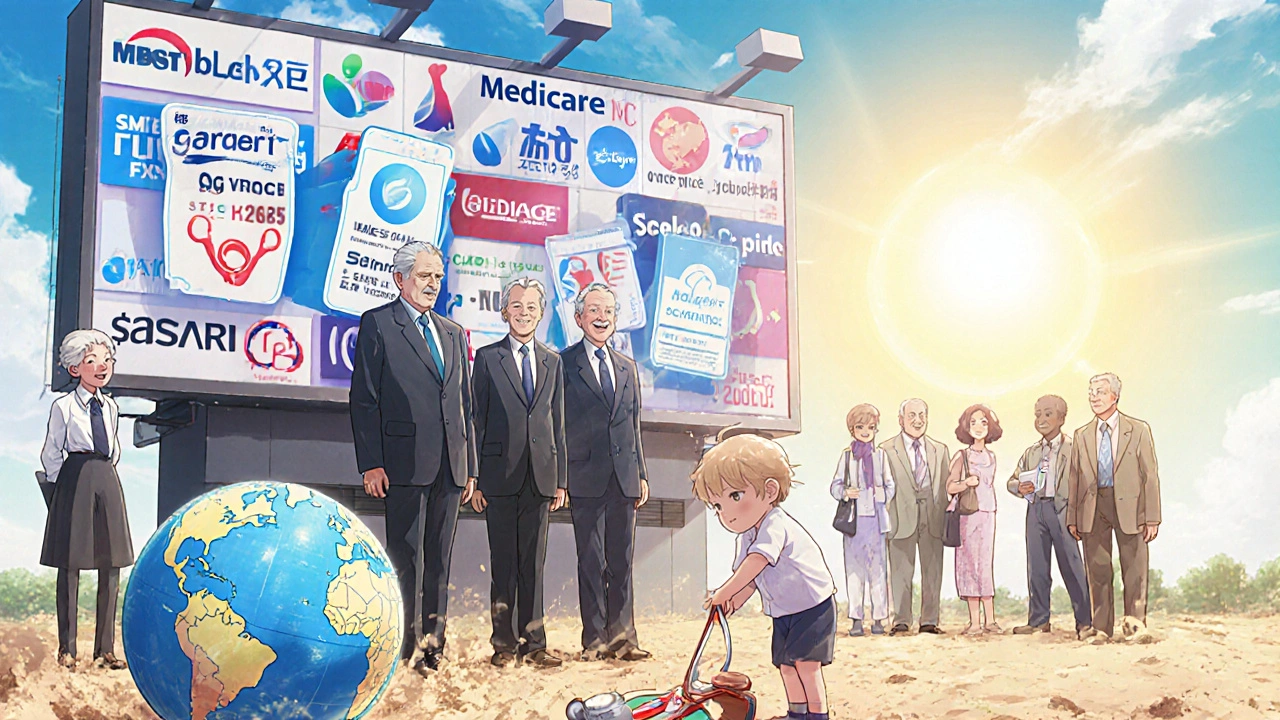
What About Generic Drugs?
If you’re taking a generic drug-like metformin, lisinopril, or atorvastatin-you’re probably paying less in the U.S. than almost anywhere else. Why? Because the U.S. has hundreds of generic manufacturers, and they compete fiercely. There’s no price control, but there’s plenty of supply.
In contrast, countries like France and Germany have fewer generic manufacturers and often impose price floors to protect local companies. That means even generics can cost more there. In India, generics are dirt cheap because of massive domestic production and relaxed patent rules. In Lebanon, generics are nearly nonexistent due to supply chain issues and economic collapse.
So if you’re on generics, the U.S. system actually works well. But if you need a new, patented drug-especially for diabetes, cancer, or autoimmune diseases-you’re in a different world.
Global Price Patterns: Who Pays the Most and Least?
A 2024 study of 72 countries found dramatic differences when adjusted for income levels. Using a standard called the Laspeyres price index (where Germany = 100), here’s how some countries stack up:
- Argentina: 578.6 (over 5 times Germany’s prices)
- United States: 487.3 (nearly 5 times higher than average)
- France: 78.2 (one of the lowest)
- Japan: 67.4 (lowest among major economies)
- Canada: 203.1
- United Kingdom: 178.9
- Australia: 145.6
Notice something? The U.S. and Argentina are outliers. Argentina’s prices are high because of inflation and import shortages. The U.S. is high because of its unique market structure-no price controls, no centralized negotiation, and powerful pharmaceutical lobbying.
Western Europe and Japan consistently rank lowest. Australia and New Zealand, while not as low as Japan, still keep prices under control through strict cost-effectiveness reviews. The U.S. is the only high-income country that doesn’t use any form of external reference pricing.
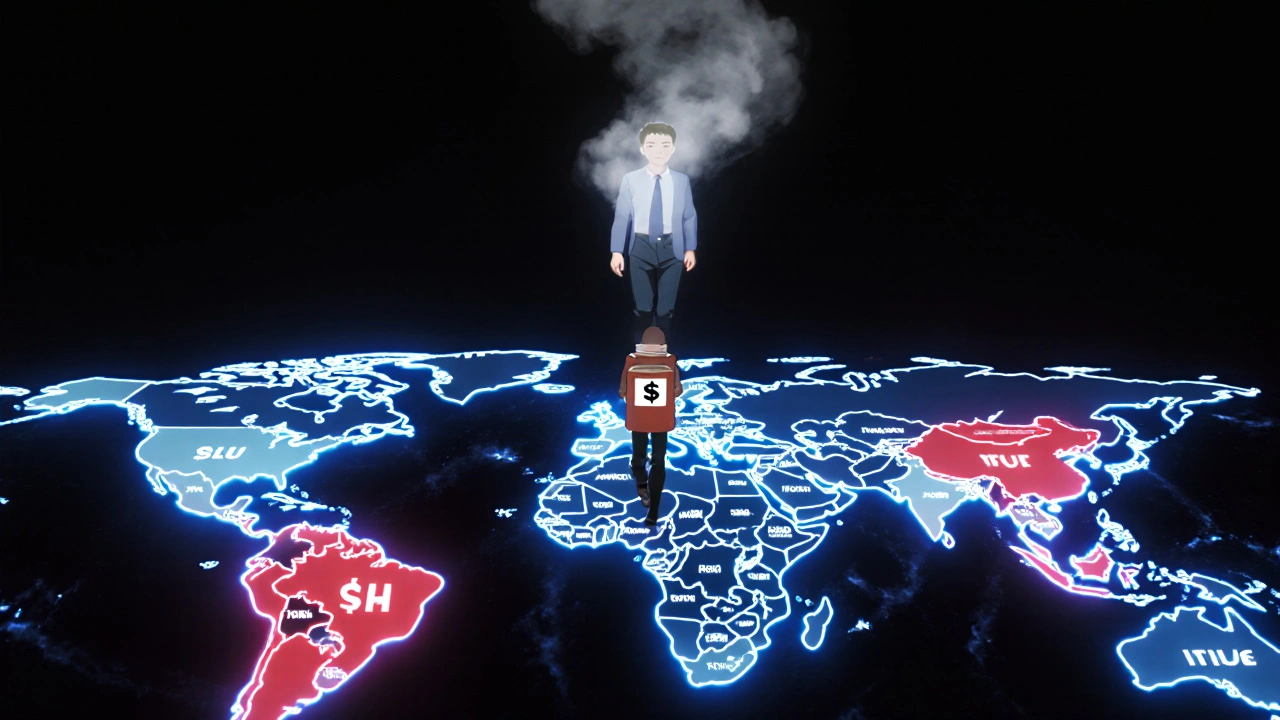
Why Does This Matter for Patients?
It’s not just about cost. It’s about access.
In countries with price controls, patients rarely face surprise bills. In the U.S., even with insurance, you might get a $5,000 copay for a new drug. That’s why 1 in 4 Americans skip doses or split pills to save money. A 2023 survey found that 40% of people on chronic medications have cut back because of cost.
And it’s not just low-income people. Middle-class families with high-deductible plans are hit just as hard. A single course of Ozempic can cost more than a monthly mortgage payment. That’s not sustainable.
Meanwhile, in Japan, patients pay only 10-30% of the drug’s price, regardless of income. In France, the government covers up to 80%. In the U.S., out-of-pocket costs can hit 50% or more for specialty drugs.
The Big Picture: Innovation vs. Affordability
Pharma companies argue that high U.S. prices fund global innovation. They say if prices were lower everywhere, fewer new drugs would be developed.
But data doesn’t fully back that up. The U.S. produces about half of all new drugs globally, but the rest of the world pays far less and still gets access. In fact, countries like the UK and Germany often get new drugs just as fast as the U.S.-sometimes faster-because they approve them based on clinical need, not price.
And innovation isn’t just about new molecules. It’s also about making existing drugs more accessible. China’s national drug negotiation program has cut prices for cancer drugs by up to 70% in just five years. India produces 40% of the world’s generic medicines. These countries aren’t killing innovation-they’re redefining it.
The U.S. model isn’t broken because it’s inefficient. It’s broken because it’s unfair. It lets the rich get new drugs easily while forcing others to choose between food and medicine.
What’s Next?
The U.S. is changing. Medicare’s negotiation program is just beginning. More states are trying to cap insulin prices. Some are importing drugs from Canada. The Inflation Reduction Act will keep adding drugs to the negotiation list through 2029.
But without broader reforms-like allowing Medicare to negotiate all drugs, capping out-of-pocket costs, or adopting reference pricing-the U.S. will keep paying more than any other country for the same pills.
For now, if you’re on a brand-name drug, check what it costs in Canada or the UK. You might be surprised. And if you’re on generics? You’re already getting one of the best deals in the world.
Why are drug prices so much higher in the U.S. than in other countries?
The U.S. doesn’t regulate drug prices the way most other countries do. Instead, it relies on private insurers to negotiate with pharmaceutical companies. Because there’s no centralized system, companies can set high list prices. Other countries use price controls, reference pricing, and government negotiation to keep costs down. The U.S. also pays more for brand-name drugs because it’s the only major market without limits on what manufacturers can charge.
Do generic drugs cost less in the U.S. than elsewhere?
Yes, by a lot. About 90% of prescriptions in the U.S. are for generics, and they cost, on average, 67% less than in countries like Canada, Germany, or the UK. This is because the U.S. has hundreds of generic manufacturers competing for business. Other countries often have fewer producers and sometimes impose price floors to protect local companies, which keeps generic prices higher.
How does Medicare’s new drug negotiation program work?
Under the Inflation Reduction Act of 2022, Medicare can now directly negotiate prices for up to 10 high-cost drugs each year starting in 2025. The first 10 drugs were selected in 2023, and their new prices were announced in 2024. These prices are based on what other countries pay and the drug’s cost to produce. The goal is to reduce out-of-pocket costs for seniors. By 2029, Medicare will be negotiating up to 60 drugs annually.
Which countries have the lowest drug prices?
Japan consistently has the lowest prices for brand-name drugs among major economies, followed closely by France and Australia. These countries use strong government negotiation and reference pricing-setting prices based on what other countries pay. Canada and the UK also have lower prices than the U.S., though not as low as Japan. In contrast, Argentina and Lebanon have some of the highest prices due to economic instability and supply shortages.
Can Americans buy cheaper drugs from other countries?
Technically, importing drugs from Canada or other countries is against federal law, but enforcement is rare for personal use. Some states have started official importation programs that bring in drugs from Canada under strict safety rules. Online pharmacies from other countries exist, but they’re risky-many sell counterfeit or expired drugs. The safest option is to use U.S.-based pharmacy comparison tools or ask your doctor about patient assistance programs.
Why don’t all countries just copy the U.S. system?
Because it’s expensive and unequal. The U.S. system rewards pharmaceutical companies with high profits, but it leaves many patients unable to afford their meds. Other countries prioritize universal access and cost control over corporate profits. They’ve chosen to limit drug prices so that everyone can get what they need-not just those who can pay. The U.S. model may fuel innovation, but it also creates massive financial hardship for millions of people.

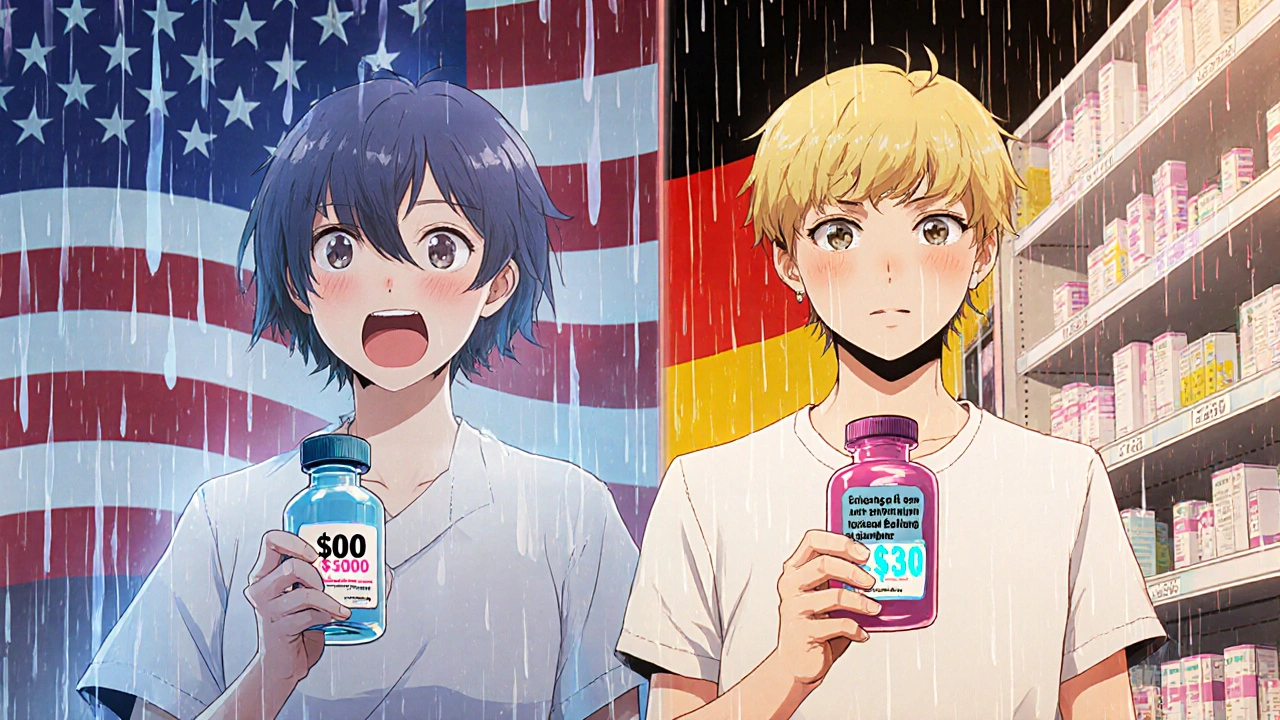
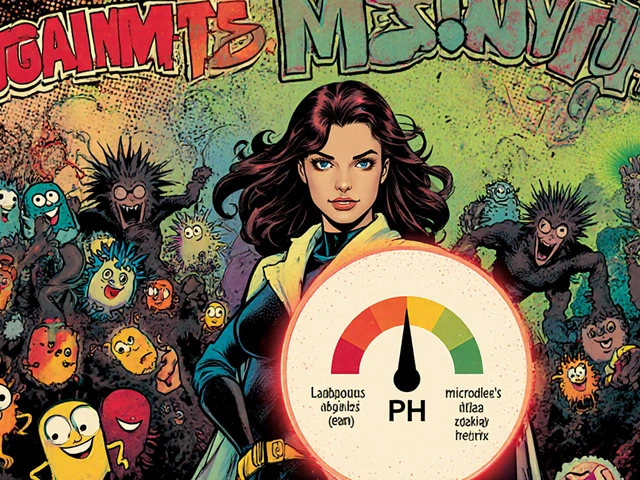

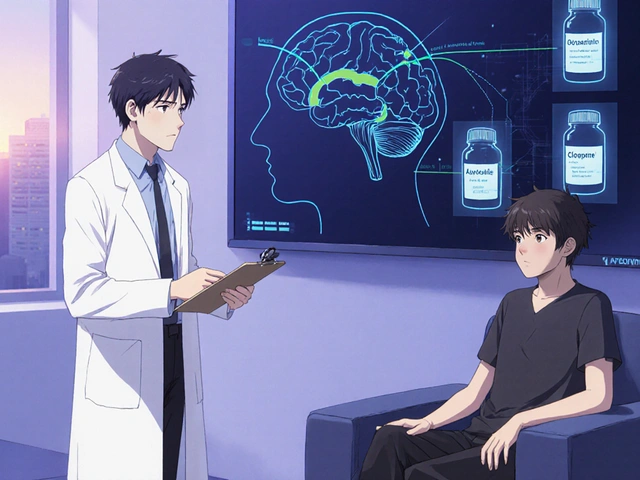

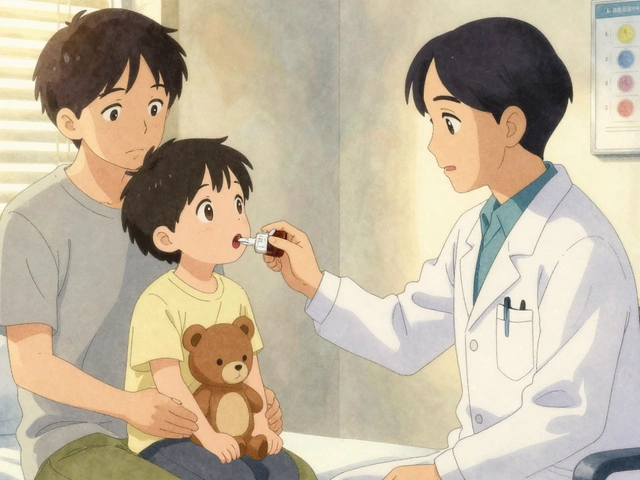

mike tallent
November 18, 2025 AT 00:07Man, I just checked my insulin co-pay last week - $45 at Walmart. Meanwhile my buddy in Canada pays like $12 for the same thing. U.S. system is wild. Generics? We’re crushing it. Brand-name drugs? Bro, we’re getting robbed. 🤡💊
Joyce Genon
November 18, 2025 AT 21:45Let’s be real - this whole ‘Medicare negotiation’ thing is just a PR stunt. Big Pharma’s got lobbyists in every hallway of Congress. They’ll just raise list prices before the negotiation kicks in, then ‘offer’ a slightly lower price that still leaves patients paying thousands. It’s the same old game, just with a new name. They don’t want affordability - they want profit margins that make Amazon look like a nonprofit. And don’t even get me started on how the FDA approves drugs faster than any other country but lets prices stay obscene. This isn’t healthcare reform - it’s theater for middle-class guilt.
Julie Roe
November 19, 2025 AT 19:20I work in a community clinic, and I see this every single day. A woman came in last month needing Ozempic for her diabetes - her insurance said no, so she was splitting pills with a razor blade. She said she’d rather lose 10 pounds than lose her home. We’ve got a system that punishes people for being sick. It’s not about innovation - it’s about who gets to live. The U.S. doesn’t have a drug pricing problem. We have a moral failure. And Medicare’s new negotiations? It’s a start. But we need caps on out-of-pocket costs. We need importation. We need to stop pretending this is about ‘market efficiency’ when real people are skipping meals to afford their meds.
Gary Lam
November 20, 2025 AT 11:26So let me get this straight - we pay 5x more than Japan for the same drug, but we’re the ones who ‘invented’ it? Cool. So if I build a Ferrari in my garage and sell it for $500, and someone else copies it and sells it for $200, I’m the hero? Nah. We’re not the innovation engine - we’re the profit engine. And the rest of the world? They’re just tired of paying for our corporate greed. 🇯🇵 vs 🇺🇸 - one’s a healthcare system, the other’s a shareholder meeting with a pharmacy attached.
Andrew Cairney
November 20, 2025 AT 18:14Big Pharma owns the FDA, the CMS, and half the senators. The ‘negotiation’ is a joke. They’ve been doing this for decades - inflate prices, then ‘offer’ a discount to Medicare that’s still 3x what it costs to produce. Meanwhile, your cousin in India gets the same pill for $2 because they don’t care about patents. This isn’t capitalism - it’s state-sponsored robbery. And don’t tell me ‘it funds research’ - 90% of the foundational science for these drugs came from taxpayer-funded universities. We’re paying twice. Once for the science, once for the monopoly. 🤡
vinod mali
November 21, 2025 AT 15:00in india generics are cheap because we make them. no patent nonsense. metformin costs 5 rupees. insulin 20 rupees. people die here too but not because of price - because of access. no insurance. no pharmacy nearby. so yes, u.s. prices are insane but here we dont even have the option to pay. still - i wish we could make meds like you do. just without the greed.
John Wayne
November 23, 2025 AT 08:54It’s fascinating how the article romanticizes European price controls as ‘fair,’ while ignoring the inevitable rationing, waiting lists, and stifled innovation that follows. Japan’s low prices? They delay drug approvals by years. Canada? They have the longest wait times for cancer treatments in the OECD. The U.S. system, for all its flaws, delivers drugs faster and funds the majority of global R&D. You want affordability? Fine. But don’t pretend you’re not trading quality and speed for lower numbers on a spreadsheet.
Peter Stephen .O
November 23, 2025 AT 16:32Think about it like this - if you bought a Tesla in Germany, you’d pay 20% less than in the U.S. But Tesla still makes bank because they sell 10x more cars in the States. Same thing with drugs. The U.S. pays more because we buy more - and that’s what lets companies take risks on crazy science like mRNA or CRISPR therapies. The rest of the world free-rides. And yeah, it’s brutal for patients. But if we cap prices, who’s gonna fund the next miracle drug? Someone’s gotta foot the bill. Might as well be the country with the most cash and the most sick people.
jalyssa chea
November 23, 2025 AT 19:13they say the u.s. pays more but what they dont tell you is that most people dont pay list price anyway insurance and discounts cover most of it so why are you crying about the sticker price its like complaining about the msrp on a car when you got 40k off
Rob Goldstein
November 24, 2025 AT 12:57From a pharmacoeconomic standpoint, the U.S. exhibits a classic market failure: price elasticity is near zero for life-sustaining medications. Patients have no choice - they pay or die. Meanwhile, external reference pricing (ERP) systems in the EU and Japan create implicit price ceilings that suppress R&D incentives. The real issue isn’t corporate greed - it’s structural asymmetry. We need value-based pricing models tied to clinical outcomes, not list prices. And yes, generics? They’re a triumph of competitive market dynamics. But for biologics and orphan drugs, we need a hybrid model - public-private risk-sharing, with tiered reimbursement based on QALY gains. Medicare’s negotiation is a baby step. We need to build an entire infrastructure - not just negotiate 60 drugs by 2029.
Jennie Zhu
November 25, 2025 AT 10:48While the empirical data presented in this analysis is both comprehensive and methodologically sound, it is imperative to acknowledge the underlying normative assumptions embedded within the narrative framework. The implicit valorization of price control mechanisms as inherently superior to market-based negotiation structures reflects a normative bias toward egalitarian distributive justice, which, while morally compelling, may inadvertently undermine the innovation ecosystem that has historically produced the majority of novel therapeutic agents. A more balanced discourse would require explicit consideration of opportunity costs associated with price regulation, particularly in the context of global R&D allocation and the temporal lag between drug discovery and market availability.
Kathy Grant
November 26, 2025 AT 20:45I used to think this was just about money. Then my mom got diagnosed with MS. She was on a drug that cost $14,000 a month. Insurance covered 80%. She still paid $2,800. She sold her jewelry. She skipped her own doctor visits. She cried every time she opened the pharmacy bag. I didn’t realize until then - this isn’t policy. This is grief dressed up as economics. The U.S. doesn’t just overpay for drugs. We make people choose between dignity and survival. And no, Medicare negotiating 60 drugs won’t fix that. What fixes that is a society that says: no one should have to beg to stay alive. That’s not radical. That’s human.
Abdul Mubeen
November 28, 2025 AT 10:25It's amusing how the author conveniently omits the fact that the United States bears the burden of global pharmaceutical R&D funding, while other nations effectively engage in intellectual property arbitrage. The notion that price controls are a moral imperative ignores the fact that the development of biologics such as Ozempic required over $2 billion and 12 years of research - funded almost entirely by American capital and risk. To demand that other nations pay less while expecting American taxpayers and insurers to subsidize the entire innovation pipeline is not justice - it is exploitation dressed in the language of equity. The real scandal is not the price tag - it is the moral hypocrisy of nations that consume American innovation while systematically suppressing its economic return.